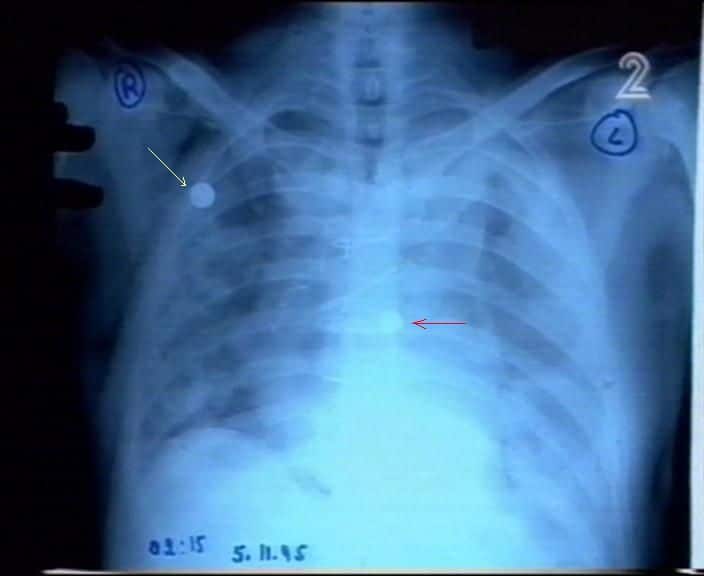Israeli Statesman Helped Dig His Own Grave
VT brings you another great historical article and video…
by Trowbridge H. Ford … edited by Jim W. Dean
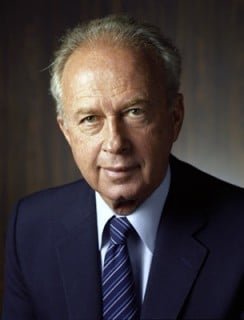
No democratic, developed country has more secretive, conspiratorial ways than the state of Israel, and they were never more in evidence than when its Prime Minister, Yitzhak Rabin, was assassinated on November 4, 1995 after attending a “Yes to Peace, No to Violence” rally in Tel Aviv by apparently a young, 3rd-year-law student at Bar-Ilan University, Yigal Amir.
The media portrayed the killing as the result of a right-wing fanatic, opposed to any peace settlement with the Palestinians but it was actually caused by a covert operation gone wrong.
It was reminiscent of John Hinckley’s nearly successful assassination almost fifteen years earlier of President Reagan rather than the mythic ‘lone assassin’ theory which people in the Western world have become accustomed to when such killings occur.
The real key to understanding the murder is appreciating the close connection that Israel established with the United States during its 40-year existence.
Without Washington’s increasing support, the Israeli state never would have made it, given the problems the Disapora and Holocaust had caused masses of Jewish people trying to resettle in Palestine.
The Truman administration’s prodding of the new Labour government in Britain to give up its Palestinian Mandate was followed by the May 1948 war in which Israeli forces triumphed against all the odds over those from the weak Arab states of Iraq, Lebanon, Syria, and Egypt.
While Atlee’s government attributed Truman’s stance of pandering to Jewish voters – and the President did acknowledge to a group of Mid-East ambassadors that he had no Arab constituents to contend with – he was genuinely committed to the Zionist cause.
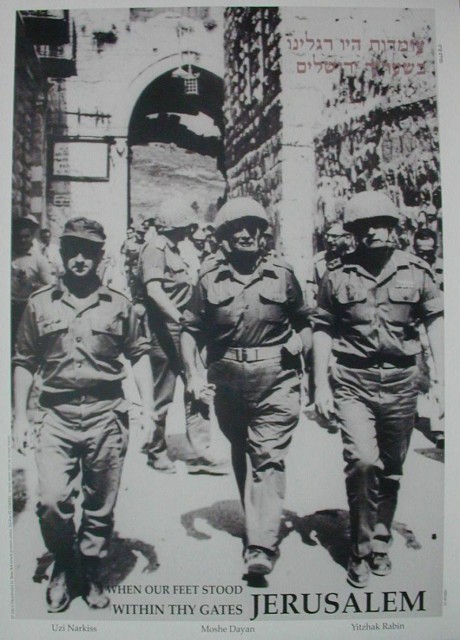
To enhance Democratic chances at the polls, Truman pressed for the admission of 100,000 Jewish refugees, and called for the partition of the country.
When the Mandate expired on May 16, 1948, the USA, along with the USSR, immediately recognized the new state of Israel. Still, Truman’s support of the Zionist cause did not play a significant role in his election in November.
During the War of Independence, Rabin, a native of Palestine, was in an ideal position to take military command of the situation as the British were forced by Jewish terrorists to withdraw.
Since he had helped British forces to attack Vichy ones in Lebanon during WWII, he was domestically positioned by 1944 to take command of the Palmach commando unit of the Haganah – what would become the nucleus of the Israeli Defence Force (IDF).
It took the lead in ousting Arabs from key territory around Tel Aviv, and on the road to Jerusalem.
While the Palmach failed to secure the Old City after the British finally departed, Rabin was still seen as a leading hero of the struggle.
The most controversial incident regarding Rabin’s alleged activities during the struggle for independence occurred on June 22, 1948 when a ship-load of Jewish Freedom Fighters, and munitions on the Altelena were prevented from joining up with Menachem Begin’s Irgun guerrillas.
They had blown up the King David Hotel in Jerusalem in July 1946, and it was feared that they would break the agreement for the cessation of hostilities.
Before the ship sailed from Port-de-Bouc in France, the Irgun in Palestine had signed an agreement with the government of David Ben-Gurion in Tel Aviv that all arms and fighters independently recruited would be handed over to the IDF.
The ship sailed in the hope of getting round it somehow, and secretly landing them unnoticed somewhere in Palestine – what was largely defeated by Radio London announcing its departure at the time.
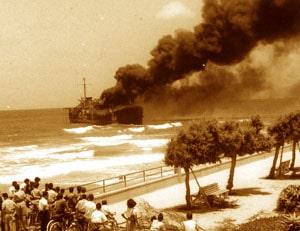
When the ship finally landed at Klar Vitin, David Even’s IDF brigade, thanks to an order given by the government, set about seizing the 1,000 men, and confiscating the 4.5 ton cargo of weapons, ultimately resulting in fighting during which six of them were killed.
The ship then sailed on to Tel Aviv, and before the whole confrontation was settled, another 10 died, and the ship was set afire.
In the accounts of the Altelena Affair, there is no mention of Rabin having played any significant role in the confrontation.
Apologist Ben Shapiro made up for that by having him carry the can when Rabin was assassinated for the failure of Begin, Ben-Gurion and Even to settle the difficulty peacefully.
During the Suez Crisis, Rabin, as commander of the Harel Brigade, was most eager to take advantage of its incursion on October 28, 1956 into the Sinai towards the Suez Canal, but the failure of Tel Aviv, Paris, and London to clear the whole operation with Washington resulted in it all going for naught.
The invaders were confident that they could force Eisenhower’s hand into backing the ouster of Egypt’s uppiddy dictator Gamal Abdel Nasser, but the American President reacted with unprecedented opposition and speed, causing all those involved, especially Israeli Prime Minister Ben-Gurion, Defence Minister Shimon Peres, IDF chief Moshe Dayan, and Rabin never to forget the lesson.
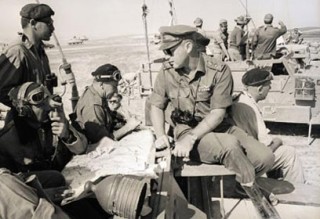
Washington had learned something about what was planned by intercepts that the new National Security Agency (NSA) had made of messages between Tel Aviv and Paris, and those between its allies in Paris and London, but had not learned the substance of.
Thanks to the division that Washington and London had made for eavesdropping on the world under the terms of the the postwar communications agreement, listening on what was transpiring in the Middle East was left to Britain’s Government Communications Headquarters (GCHQ) to pass on to NSA.
It was sending along only a few which did not reveal what was planned. When Eisenhower learned the full extent of their perfidy, Washington took the necessary actions to reverse it, and NSA vowed never again to be caught short in supplying the necessary intelligence in such crucial Cold War confrontations.
The fallout from the fiasco had resulted in the Soviet Union tightening its hold on the Soviet bloc by suppressing the uprising in Budapest at the same time.
Ike, still suspecting that at worst the action in the Middle East was a surprise attack on Jordan, was completely taken aback when the Israelis invaded the Sinai, advancing within 25 miles east of the Canal – just when Imre Nagy, Hungary’s new Prime Minister, announced the restoration of multi-party rule.
America’s U-2 intelligence gathering concentrated upon determining what was slowly unfolding in Egypt for fear that the USSR would take advantage of the fiasco there when, in fact, Moscow was arranging a rollback of what was happening in Budapest.
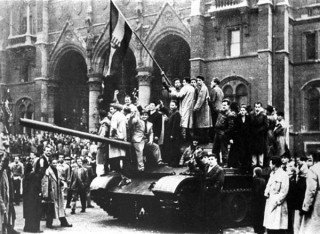
On November 4th, two days before the American election, the Red Army began its suppression of the Hungarian revolution – something that Ike admitted that America, under the circumstances, could do nothing about. (Christopher Andrew, For The President’s Eyes Only, pp. 236-7).
By 1964, Rabin had become the IDF’s Chief-of-Staff, and he planned to pay back Washington and Cairo for the humiliation he and the IDF had experienced eights years earlier – what resulted in the devastating Six-Day War three years later.
This time, Israel revealed its aggression to no one, counting on the fact that it could dictate Washington’s response after the fact.
This was accomplished thanks to tight security its military-intelligence establishment was noted for, and the political influence Jewish Americans had on the beleaguered Johnson administration, bogged down in Vietnam, and facing the prospect of a tough re-election campaign.
There would be no babbling by the Israeli Prime Minister and her defence establishment to Washington about what was in the works this time, as had happened with Prime Minister Anthony Eden et. al. during the Suez Crisis.
The Israeli attacks on its neighbors, starting on June 4, 1967, were masterful deceptions, fooling everyone, it seemed, about who was attacking who with what – making Germany’s deceptions before its soldiers marched into Poland in 1939, and the CIA’s ones before the Bay of Pigs invasion in 1961 look like the most crude attempts.
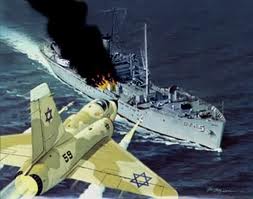
The only surprise in the whole operation was the unexpected appearance of the American spy ship, USS Liberty, off El Arish on Egypt’s Mediterranean coast on June 8th during the height of the struggle.
The spy ship had great advantages in eavesdropping over other means as it could stay in an area where trouble was anticipated, and it could monitor and analyse all kinds of intelligence from close in, 24-7.
Its only drawback was that it could hardly defend itself if discovered and attacked.
As James Bamford has described in the greatest detail in Body of Secrets, the Israelis attacked the snooper with the greatest force from sea and air for fear that it was monitoring the slaughter that Rabin’s forces were carrying out on shore against Egyptian prisoners:
“…Israeli troops killed, in cold blood, as many as 1,000 Egyptian prisoners in the Sinai, including some 400 in the sand dunes of El Arish.” (p. 202)
In an attempt to prevent the war crimes from coming out, the IDF killed 34 servicemen on the ship, wounded 171 more, and nearly sank the ship itself. It was only after the Israelis had failed to eradicate the mission that they falsely claimed that the attacks were a mistake, and agreed most reluctantly to pay measly compensation for what they had done.
When Washington learned of the hostilities, Israeli Foreign Minister Abba Eban told the American Ambassador to Israel Walworth Barbour that the Egyptians had started them – a considerable armored force had entered its territory, and had given IDF ones battle.
The Foreign Minister lied about Israeli intentions, claiming that they were just interested in containing Egypt’s aggression when, in face, they were involved in grabbing territory which had eluded them nine years earlier.
While Israel wanted Washington to put pressure on the Soviets not to intervene, Moscow preempted the effort by sending an unprecedented message on the hot line, urging Washington to do all that it could to end hostilities, particularly exerting pressure on Israel to do the same.
After a hectic half hour in the White House over how to respond to the Soviets’ entreaty, Washington told Moscow that it would not be entering the conflict
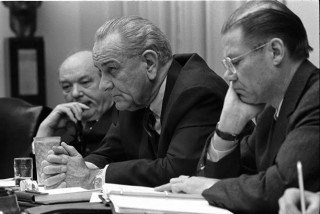
It was only afterwards that President Johnson learned of the ship’s dire straits, especially the carnage on board. In anticipation of such a conflict, Washington had sent the USS Liberty there is the hope of preventing it, or at least containing it from becoming a conflict with the USSR.
On May 23rd, it was ordered to leave Abidjan in the Ivory Coast, and steam as fast as possible to the US Navy base in Rota, Spain, a journey of 3,000 miles, and requiring eight days travel.
There, it picked up five Arabic linguists and one senior analyst Marine Sergeant Bryce Lockwood to assess the meaning of what the Egyptians were planning and doing. (Bamford, pp.188-9)
While Frank Raven told Bamford that the lack of any Hebrew linguists was due to their shortage, it indicated that NSA was only planning to eavesdrop on what the Muslims were doing. On June lst, the ship left Rota, and deployed just off El Arish when the Israeli attacks started.
It seems that this effort was conducted secretly from the Israelis to give them cover without there being any revealing feedback from what was happening. The ship would have all kinds of messages deciphered about what Nasser’s forces were doing, but none from the Israelis – what would quell any complaints, especially by the Soviets, of Israeli aggression.
It would have no record of any massacres of prisoners by the IDF, and there were still no Hebrew linguists back at headquarters in Athens. It apparently was the Johnson administration’s compensation for the damage the Israelis had suffered at the hands of the Eisenhower administration.
The only trouble with it for the Israelis was that they knew nothing about it, so they went bonkers when they discovered the spy ship just off the coast in international waters, fearing that it was collecting information about war crimes which would be used against Israel’s military leadership. There was no other way they could interpret this new surprise.
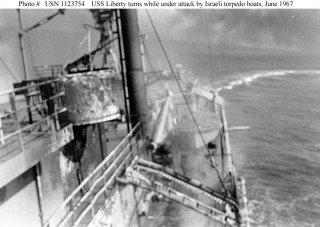
And when LBJ learned of the attack, Washington was more interested in sinking the ship in order to protect its vital Sigint secrets from falling into enemy hands, and to protect Israel from any embarrassment by inflaming American public opinion than saving it, and providing succor to its crew.
While LBJ was afraid that the Soviets had attacked the ship, he was soon informed by his ambassador in Tel Aviv that the Israelis had confessed to having attacked it “in error”.
NSA had discovered the attack before anyone else, though, showing that it had been eavesdropping on all Israeli communications to have just the right record for what it had originally planned – what Bamford still cannot explain. (p. 224)
After the President informed the Soviets that the Israelis had indeed attacked the ship “in error”, Washington hoped that the ship would indeed just sink.
LBJ amazingly ordered the Joint Chief of Staff to have fighters from the Six Fleet which had arrived on the scene to protect the ship from further attack to be recalled. “President Lyndon Johnson came on,” Rear Admiral Lawrence Geis, commander of the carrier force, added in information released after his death, “with a comment that he didn’t care if the ship sunk, he would not embarrass his allies.” (Quoted from p. 226.)
Never in American military history had the Commander-in-Chief been so cruel in the treatment of his own forces, and it can only be explained by the political motives in starting it in the first place.
The political fallout domestically, it seems, helped induce him not to run for re-election in 1968. Rabin was so upset by what he had done to Egyptian prisoners, and American eavesdroppers that he had a nervous breakdown while the fighting was still in progress.
To contain the damage done by the assault, Rabin was sent to Washington as its new ambassador, and he flouted diplomatic convention by going out of his way to make friends with members of Nixon’s new Republican administration.
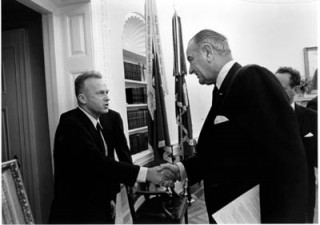
Rabin’s close relationship with NSA Henry Kissinger and DNSA Alexander Haig came in most handy when the Syrians and Egyptians tried to pay back Israel for the 1967 war by springing the Yom Kippur War on it in October 1972.
Thanks to information NSA supplied the Israelis, Ariel Sharon’s forces were able to beat back the Egyptian forces behind the Suez Canal which had surprisingly crossed it, and the Syrian threat to the Sea of Galilee was stymied just at the last moment.
When the Soviets threatened to intervene in the war, Haig forced Brezhnev to back down by placing American forces around the world on the highest alert short of imminent war.
In reading the former Nixon Chief of Staff’s book, Inner Circles: How America Changed the World, one gets a good glimpse of just how Haig manipulated Nixon to help the Israelis while Rabin was manipulating Israeli Prime Minister Golda Meir in the defense of Jordan from Syrian attacks.
Little wonder that when she retired shortly thereafter, Rabin triumphed over Peres in a bitter battle for the Labor Party leadership, and succeeded her as Prime Minister.
Three years later, though, Rabin’s coalition government fell apart over an alleged financial scandal, and he went into the political wilderness.
Rabin had made enemies out of the leading players by acting as if he were in the process of solving everything – i.e, the surprise threats to Israel’s very existence, claiming how he had been so instrumental in its creation by stopping Begin’s reckless intrusions during the Altelena Affair, and covering up the Liberty one by successfully persuading Washington that it was indeed an accident.
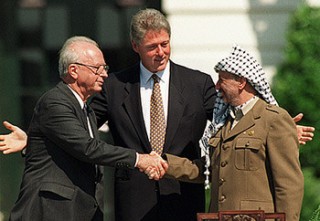
Rabin negotiated the Sinai Interim Agreement with Egypt, setting the country on its way to making peace with Anwar Sadat, and authorized the Entebbe raid which recovered almost all of the passengers who had been kidnapped by Uganda’s Edi Amin.
But he found dealing with the Carter administration and his fellow Israelis over the continuing Palestinian problem so difficult that he resigned after the Labor Party was defeated in the 1977 election.
He did so because his wife Leah had broken the rule about no Israeli having a foreign currency account without proper authority – what she had failed to do by opening a dollar one during their days there when he was the ambassador.
It seemed more like an excuse to avoid difficulties ahead all by himself, as if he had some fears of his own safety.
During his absence, the governments in Tel Aviv and Washington worked continuously to break down Arab opposition to Israel’s existence, while trying to get Israeli voters to agree to some kind of swap of land for security. By this time, Israel had more land than it needed, and the Palestinians were becoming increasingly isolated.
The Camp David Accords that President Carter negotiated between Sadat and Begin ended Egypt’s support of an armed Palestinian struggle, though Sadat was to soon lose his life at the hands of Muslim extremists. Sharon’s IDF responded by driving Yasser Arafat’s PLO out of Lebanon.
To soften American hostility to what Sharon had done, Prime Minister Begin went out of his way to tell the Reagan administration that Rabin had lied when he told previous American administrations that the attack on the Liberty was simply a mistake.
“We… had a choice,” he admitted in 1982. “The Egyptian army concentrations in the Sinai approaches do not prove that Nasser was really about to attack us. We must be honest with ourselves. We decided to attack him.” (Quoted from Bamford, p. 186)
In 1984, Rabin joined a government of national unity, headed by Labour Party leader Shimon Peres, and soon thereafter he, as Minister of Defence, was obliged to suppress the first Intifada.
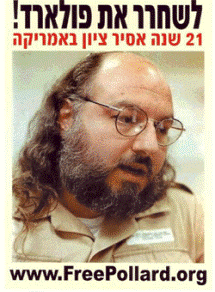
He did avoid being implicated in the spying by Jonathan Pollard for the Soviets, and the illegal arms dealing by Ollie North et al. during Iran-Contra.
Rabin had insisted that Reagan unequivocally approve the sale of Israeli weapons to Iran in return for the hostages held there, and in August 1985 the President telephoned NSA Bud McFarlane to confirm his approval, adding that Washington would replenish Israeli weapons stocks. (Lou Cannon, President Reagan, The Role of a Lifetime, pp. 544-6)
The trouble with a bipartisan attempt in both Tel Aviv and Washington to solve the Palestinian problem was that it was done without consulting their top leaders while Iran joined the countries willing to support their increasingly fragmented leadership.
Israel had long been the Shah’s closest friend in the area, and his overthrow, coupled with Sadat’s assassination, left Begin’s government nearly surrounded by enemies, and too few resources for dealing with them.
Iran’s SAVAK (the National Intelligence Organization) had long done much dirty work for the Mossad and CIA, its joint creators, and they had reciprocated in kind, but their joint operations were ultimately its undoing when the young mullahs it had recruited turned on the Shah.
As a result, Israel had to increasingly do its own dirty work – what it had only seriously done before in reaction to the killing at its Olympic athletes at the Munich Games in 1972.
The Mossad had Said Hammami, the PLO’s London representative, shot dead by agents of Abu Nidal’s Popular Front for the Liberation of Palestine in January 1978 when it feared that he, an Arab moderate, was attempting to negotiate a peace deal with the Israelis for Arafat.
“The conflict had made little progress ten years later,” Tony Geraghty added in The Bullet Catchers, “when Arafat’s military commander, Abu Jihad (real name, Khalil al-Wariz) was assassinated with military precision at his villa near Tunis, probably by agents of Israel’s secret service, Mossad.” (p. 376).
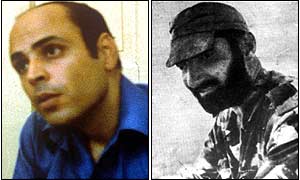
During the interim, Nidal’s terrorist group had seen to the highjacking of the Italian liner Achille Lauro, the assassination of Jewish invalid passenger Leon Klinghoffer, and the shooting up of the airports in Rome and Vienna during the terrorist countdown to the shooting of Sweden’s statsminister Olof Palme in Stockholm on February 28, 1986 – what was intended to trigger a solution to all the problems the West and Israel faced with a non-nuclear conclusion to the Cold War with the USSR.
Rabin’s forcing Washington to approve any arms shipments to Iran before they occurred proved most helpful to Tel Aviv when the fallout from Iran-Contra was occurring.
The various investigations of the scandal, especially the Tower Commission, believed McFarlane’s testimony about which came first.
“The accumulated evidence,” Cannon concluded, “did show that Reagan had given prior approval.” As a result, former head of the Israeli Air Force, and current Israeli businessman Al Schwimmer had to take personal responsibility for trying to sneak 80 HAWK missiles through Sweden on November 17th without statsminister Olof Palme’s approval, beginning the whole massive scandal which resulted in his assassination along the way,
Rabin, while he was in New York, had even called McFarlane earlier in November while he was in Geneva where Reagan and Gorbachev were to meet for the first time to make sure that he obtained Palme’s permission for using Sweden for the weapons transfer.
“Rabin had asked for help in arranging for an Israeli shipment of Hawk missiles to pass through a third country and be transferred to non-Israeli planes for delivery to Iran. McFarlane had directed Oliver North, who was in Washington, to attend to the matter.” (Lawrence Wash, Firewall: The Iran-Contra Conspiracy and Cover-Up, p. 39)
When Rabin proved unable to crush the Intifada, and the Soviet bloc and Union collapsed in a peaceful way, Rabin easily replaced Shimon Peres as Labor Party leader in its election in February 1992.
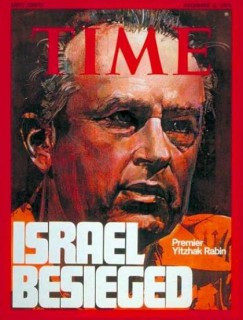
The result was hardly surprising as the former Prime Minister aka “Mister Loser” had been working behind Rabin’s back with Ollie North’s people so that the arms shipments would go ahead no matter what he wanted, and Palme demanded, as all the American investigations had indicated. (For more, see Walsh, p.37ff.)
In the surprising victory, Peres was made a most dangerous enemy, a leader who was more interested in making sure Rabin failed somehow rather than succeeded.
Thanks to Rabin’s convincing Knesset victory in the July 1992 election, he set about implementing his mandate for a permanent peace with the Palestinians – what Washington outsider Bill Clinton, just elected President, was most eager to achieve.
Upon becoming Premier, Rabin ordered Israel’s General Security Service, Shin Bet, to focus its activities on the right-wingers opposed to any settlement, and appointed close associate, Karmi Gillon, its director general – instead of the veteran and more qualified Gideon Ezra – to carry out the mission which Gillon himself had pointed out the need of. Several senior Shin Bet people quit in protest over the new mission.
“This policy change resulted in the most dangerous and bitter split ever in Israeli society,” Uri Dan and Dennis Eisenberg wrote in “A slanderous tongue.” Rabin thought it was necessary if there was to be any hope of making the dream of peace a reality.
Once the Olso Accords had been agreed to, and Rabin, Peres, and Arafat received the 1994 Nobel Peace Prize, its prospects deteriorated as suicide bombers continued to kill Israelis, and Orthodox rabbis started a most threatening campaign against Rabin’s leadership.
Peres helped set up Rabin as the prime cause of the trouble by making him make the symbolic handshake with PLO leader Arafat at the signing of the agreement in Oslo.
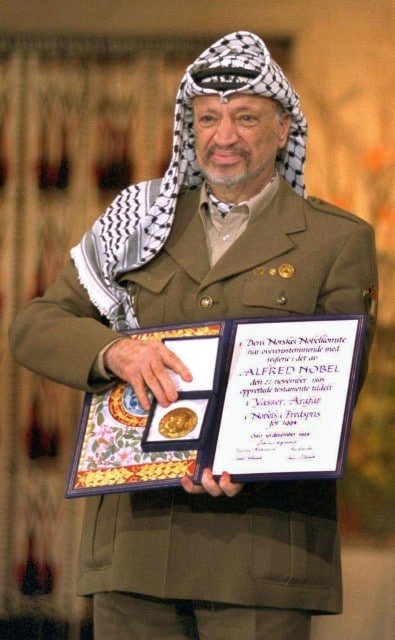
They revived two obsolete halachic precepts from the Talmud – the din rodef (the duty to kill Jews who imperil other Jews), and the din moser (the duty to kill Jews who threaten to turn in other Jews to non-Jewish authorities).
Religious law student Yigal Amir soon became acquainted with these precepts while attending Bar-Ilan University.
The precepts were soon being used against Rabin who had claimed during the 1992 election campaign that he would never negotiate with Arafat – what Yossi Beilin had met the PLO’s Abu Mazen in secret in May to work out the details of.
Because of Rabin’s actions in the Altalena Affair, right-wingers like Ben Shapiro were so clamoring that he was no hero at all since he had seen to the killing to his fellow Jews then, and was leaving others to fall into the hands of foreign authorities now.
To stem the anti-Rabin tide, Gillon, it seems, hired agent provocateurs, particularly Avishai Raviv.
They created hostile groups like Eyal, composed of angry settlers and right-wingers, to denounce and protest his policies in an increasingly violent way. Reminiscent of the campaign against Olof Palme, they called Rabin a traitor, and a Nazi.
The protesters cursed the Premier outside his apartment in Ramat Aviv, and Eyal teenagers produced a video, calling for a military coup.
When an Arab was murdered in Halhoul by persons wearing IDF uniforms, Raviv claimed that members of Eyal had done it, though, it turned out after Rabin’s assassination that Arab thieves had done it.
Rabin’s cabinet, especially Minister of Agriculture Ya’acov Tzur, still believed the deception, complaining bitterly when there were no arrests for the killing.
On October 5, 1995, there was a mass protest by the right-wingers at Zion Square, attended by Rabin’s apparent assassin. During the demonstration, a poster was raised on which Rabin’s face was pasted over the figure of Heinrich Himmler – what had been made originally by Raviv and Amir at a Eyal summer camp on the Kinneret. Amir responded to the sight thus:
“Because of this dog, this country is going to be destroyed.” When Amir noted TV cameras recording the scene, he said: “Instead of filming, will you come to the funeral? Will you come to the funeral tomorrow?” Then, Binyamin Netanyahu told the crowd being observed by guests including Sharon: “Rabin is a dog – In blood and fire we’ll drive Rabin out – will bring the government down.”
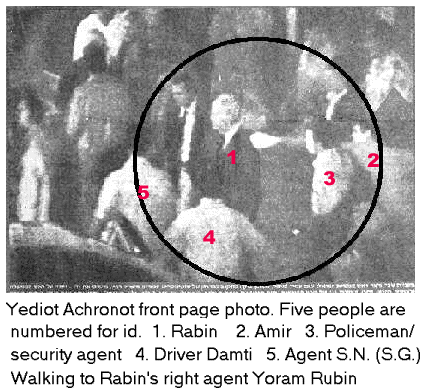
Then the group marched on the Knesset during which they attacked Rabin’s empty limousine without any response by security people.
Then it attacked Housing Minister Binyamin Ben-Eliezar in his car, threatening to kill him.
Once he escaped harm, he charged after Netanyahu, exclaiming: “The settlers have gone crazy, and someone will be murdered here, if not today, then in another week or another month.”
It was 30 days later, on November 4th, that Rabin was assassinated after Amir had fired blanks in a fake attempt to rally public support when it failed, as he went to his limousine after addressing the peace rally, while his bodyguards once again looked helplessly on.
Once in the limousine, Rabin was shot twice by covert operators, dying on the way to the hospital. It was a case of hijacking the scene that the Prime Minister had made up in order to dispose of him without any serious blowback, at least not until Shimon Peres dies.
[Editors Note: The shooting at about 1:40. I suggest you stop and start and move you play position back to watch this several times, starting and stopping. You will notice that he is too far back to have the gun flash so close to Rabin’s back. This is been doctored to stretch his arm a few feet so the gun powder residue found on Rabin’s back fits a discharge that close. Amir is about three feet further back. They took some frames out of the original video, not a big deal to do.
In VIP high security all bodyguard as assigned zones to have the perimeter covered visually. You will notice here that they are ALL looking forward…something impossible for guarding a person like this. The left, right and rear are totally uncovered. It’s almost like they did not want to see anything. A rear shooting attack like this something that is an ABC defensive training procedure. You usually will have a ‘hand on gun’ lagging security person assigned to drop anybody making such an attack, and they train for quick shooting at short distances for this.
In the real world the the lagging security would have picked up Amir making his move, spotted his hand in his pocket and begun his shoot draw immediately. As soon as Amir began to pull his gun out he would have been shot three times in the back from a 45 to 60 degree angle. The only other possibility is total incompetence of the whole team. Jim W. Dean]
[youtube C-pWbdTWTas]

Thanks to Gillon’s deceptive campaign, as the Shamgar Commission investigating the assassination duly recorded, but was prevented from releasing the damaging details of, it was a case of ‘mirror-imaging’ which had completely confused his security detail about the dire threat of.
The most damning evidence about a double-agent operation having gone horribly wrong was the admission that Raviv had urged Amir to kill Rabin to prove his manhood – what Amir achieved after shooting the blanks when he told police:
“Do your work. I’ve done mine.”
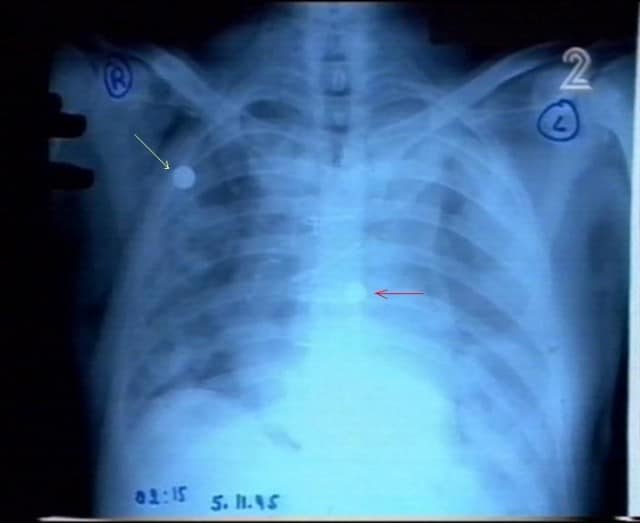

Trowbridge Ford (1929 – 2021) was the son of William Wallace Ford, the father of the US Army’s Grasshoppers.
He attended Phillips Exeter Academy, and Columbia University where he received a Ph.D. in political science after a stint in the Army’s Counter Intelligence Corps as a draftee during the Korean War, and after being discharged, worked as the sports editor and a reporter for the now-defunct Raleigh Times.
Thought academia was the thing for him. He was quite satisfied teaching all kinds of courses about European and American politics while writing his dissertation about an under-appreciated British politician, Henry Brougham, who became the Lord Chancellor of the famous Reform Government (1830-34).
At the same time, Trowbridge became most interested in the role that A. V. Dicey, a famous Oxford legal professor, played in settling the Irish question – another figure that historians didn’t think did much about. It was while he was doing research on the dissertation at the British Museum in London that President Kennedy was assassinated, and it slowly led him to take a dimmer view of academic life, especially when joined by campus protests over the growing Vietnam War. He was fired by two institutions of higher learning because of his protests against the war.
When the Vietnam War finally ended, he got involved in researching the Dallas assassination, and his first serious efforts about it appeared in Tom Valentine’s The National Exchange in 1978 – what Fletcher Prouty thought was quite good, just urging him to go higher in the Agency and the political world for the main culprits.
He slowly started doing this, ultimately deciding to retire early in 1986, planning on finishing his Brougham biography while living in Portugal. While he did this, he had made too many enemies with the White House not to be punished – first by attempts to establish that he maliciously tried to destroy Richard Nixon during Watergate by libeling him, and when he died, DCI George Tenet tried to have me killed by poisoning – what would make his death look like a suicide or a natural one.
As a result of this, once he had finally determined the cause, he moved to Sweden to not only save his skin but also investigate and write about assassinations, covert operations, ‘false flag’ deceptions, preventive wars, weapons development, and their use, etc. He passed away in 2021.
ATTENTION READERS
We See The World From All Sides and Want YOU To Be Fully InformedIn fact, intentional disinformation is a disgraceful scourge in media today. So to assuage any possible errant incorrect information posted herein, we strongly encourage you to seek corroboration from other non-VT sources before forming an educated opinion.
About VT - Policies & Disclosures - Comment Policy

